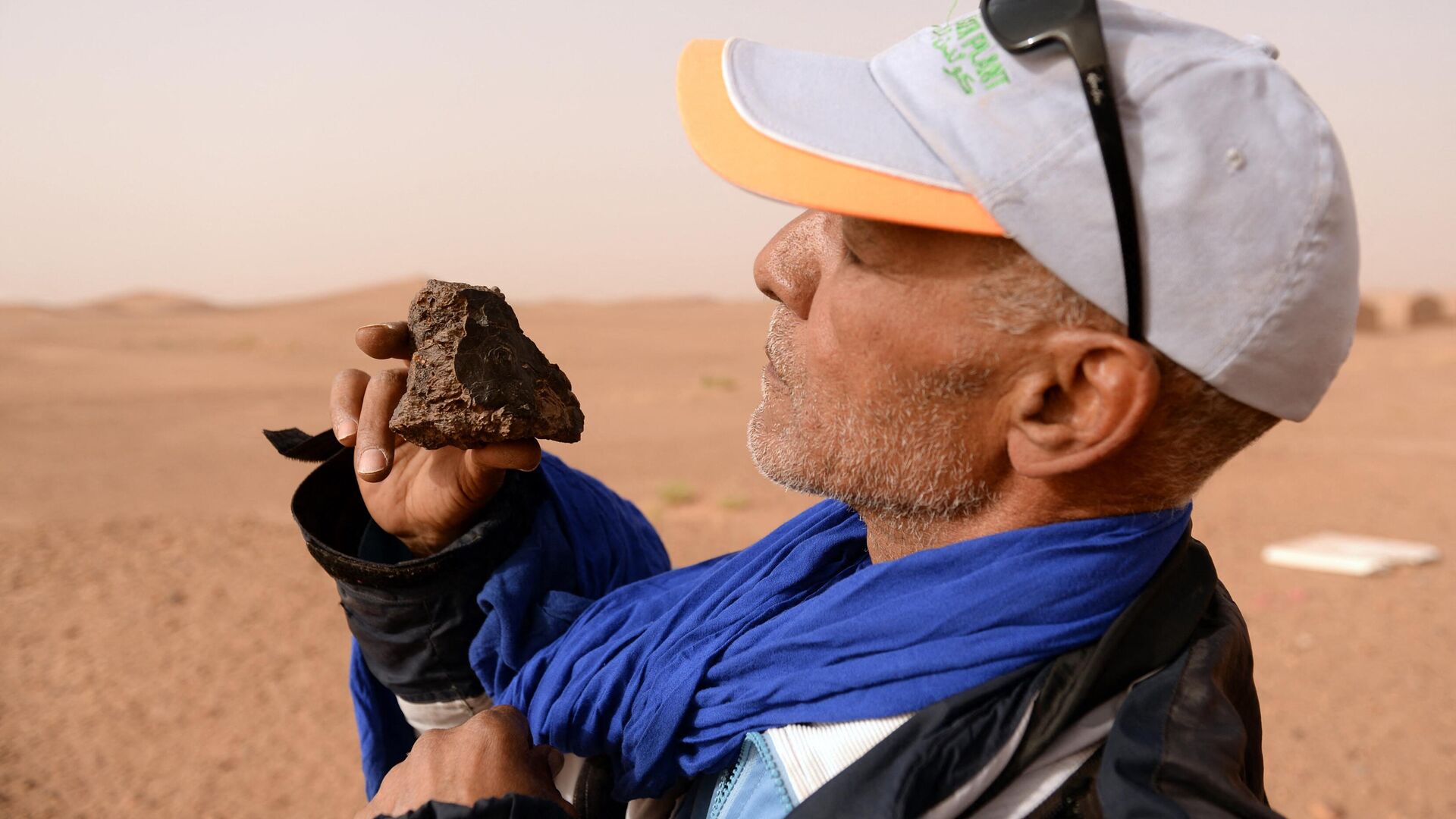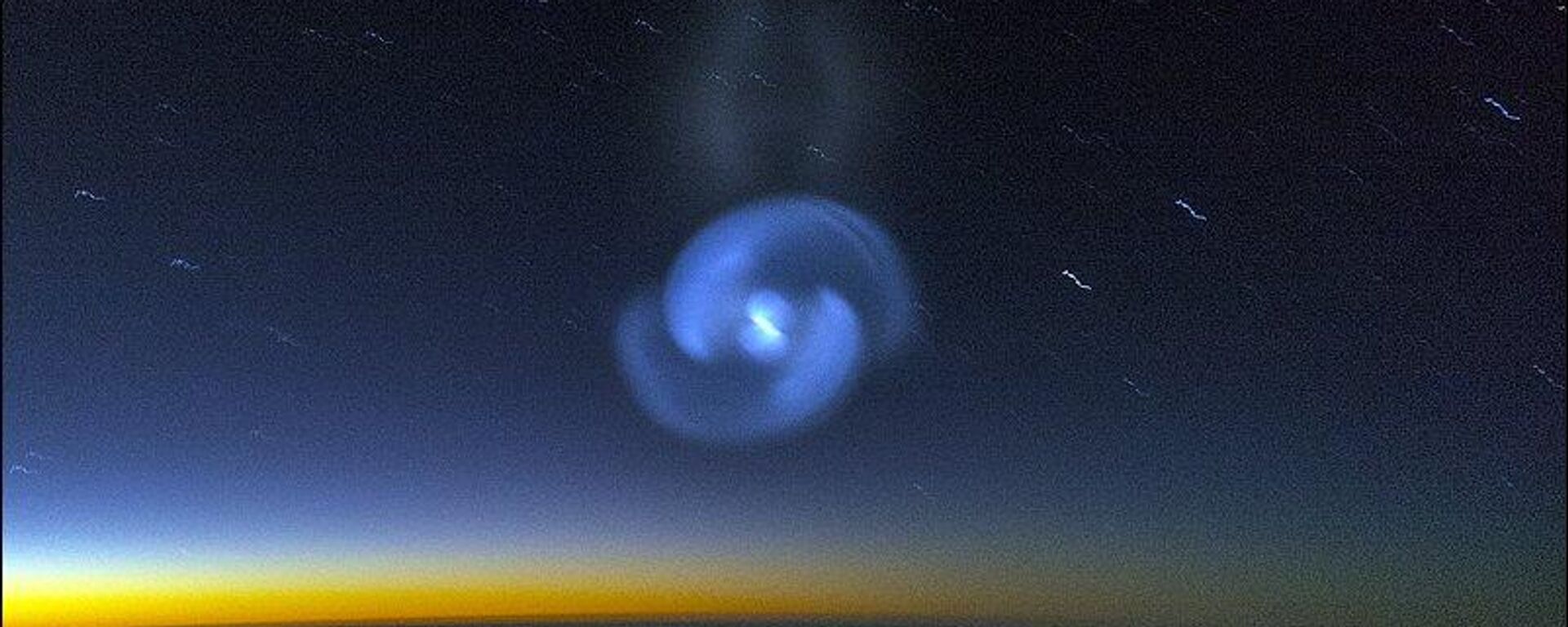https://en.sputniknews.africa/20230715/stone-thats-got-itchy-feet-meteorite-leaves-earth-only-to-return-and-crash-in-morocco-1060554670.html
Stone That's Got Itchy Feet: Meteorite Leaves Earth Only to Return and Crash in Morocco
Stone That's Got Itchy Feet: Meteorite Leaves Earth Only to Return and Crash in Morocco
Sputnik Africa
In an unprecedented case, scientists have discovered that a meteorite found in Morocco left the Earth only to return thousands of years later and crash in the... 15.07.2023, Sputnik Africa
2023-07-15T17:52+0200
2023-07-15T17:52+0200
2023-07-15T17:52+0200
north africa
morocco
space
space exploration
earth
science
https://cdn1.img.sputniknews.africa/img/07e7/07/0f/1060556174_0:183:3313:2047_1920x0_80_0_0_0447e2d12817d4f3758456358b97a0b3.jpg
A meteorite named Northwest Africa 13188 has made an extraordinary journey through space, according to a recent study presented at the geochemical Goldschmidt Conference in France.Discovered in Morocco in 2018, the object left Earth's gravitational pull only to return to it. Weighing 646 grams, its chemical composition is close to that of terrestrial volcanic minerals. But the rock also contains helium-3, beryllium-10 and neon-21, suggesting it has been exposed to cosmic rays.Scientists therefore believe that the rock is of terrestrial origin, but flew into space before returning to crash into our planet.It remains to be seen how this rock was transported into outer space. The hypothesis that it was ejected after a volcanic eruption remains to be verified. Volcanic plumes usually don't rise more than 50 kilometers, so it seems unlikely that an eruption could eject a rock into space.A Terrestrial Rock on the MoonWhile a meteorite's round trip to Earth would be a unique event, terrestrial rocks have been found on other celestial bodies. In 1971, the Apollo 14 mission discovered the oldest terrestrial rock ever found – on the Moon!The 4-billion-year-old object could be a remnant of the Hadean Eon, the oldest division of geologic time. It could have been thrown into space by the impact of a comet or asteroid, an event that sent matter through Earth's primitive atmosphere. The rock would then have found its way to the Moon, which was three times closer to our planet 4 billion years ago.
https://en.sputniknews.africa/20230702/world-ufo-day-most-mysterious-sightings-in-africa-1060287160.html
north africa
morocco
space
earth
Sputnik Africa
feedback@sputniknews.com
+74956456601
MIA „Rossiya Segodnya“
2023
Muhammad Nooh Osman
https://cdn1.img.sputniknews.africa/img/07e7/04/0a/1058467512_0:0:1280:1280_100x100_80_0_0_ec723833bcbfcaed2e21952965ad99e4.jpg
Muhammad Nooh Osman
https://cdn1.img.sputniknews.africa/img/07e7/04/0a/1058467512_0:0:1280:1280_100x100_80_0_0_ec723833bcbfcaed2e21952965ad99e4.jpg
News
en_EN
Sputnik Africa
feedback@sputniknews.com
+74956456601
MIA „Rossiya Segodnya“
Sputnik Africa
feedback@sputniknews.com
+74956456601
MIA „Rossiya Segodnya“
Muhammad Nooh Osman
https://cdn1.img.sputniknews.africa/img/07e7/04/0a/1058467512_0:0:1280:1280_100x100_80_0_0_ec723833bcbfcaed2e21952965ad99e4.jpg
north africa, morocco, space, space exploration, earth, science
north africa, morocco, space, space exploration, earth, science
Stone That's Got Itchy Feet: Meteorite Leaves Earth Only to Return and Crash in Morocco
Muhammad Nooh Osman
Writer/Editor
In an unprecedented case, scientists have discovered that a meteorite found in Morocco left the Earth only to return thousands of years later and crash in the North African country.
A meteorite named Northwest Africa 13188 has made an extraordinary journey through
space, according to a recent study presented at the geochemical Goldschmidt Conference in France.
Discovered in Morocco in 2018, the object left Earth's gravitational pull only to return to it. Weighing 646 grams, its chemical composition is close to that of terrestrial volcanic minerals. But the rock also contains helium-3, beryllium-10 and neon-21, suggesting it has been exposed to cosmic rays.
Scientists therefore believe that the rock is of terrestrial origin, but flew into space before returning to crash into our planet.
"Therefore, we consider NWA 13188 to be a meteorite, launched form the Earth and later re-accreted to its surface," explain the researchers in a press release.
It remains to be seen how this rock was transported into outer space. The hypothesis that it was ejected after a volcanic eruption remains to be verified. Volcanic plumes usually don't rise more than 50 kilometers, so it seems unlikely that an eruption could eject a rock into space.
A Terrestrial Rock on the Moon
While a meteorite's
round trip to Earth would be a unique event, terrestrial rocks have been found on other celestial bodies. In 1971, the Apollo 14 mission discovered the oldest terrestrial rock ever found – on the Moon!
The 4-billion-year-old object could be a remnant of the Hadean Eon, the oldest division of geologic time. It could have been thrown into space by the impact of a comet or asteroid, an event that sent matter through Earth's primitive atmosphere.
The rock would then have found its way to the Moon, which was three times closer to our planet 4 billion years ago.



